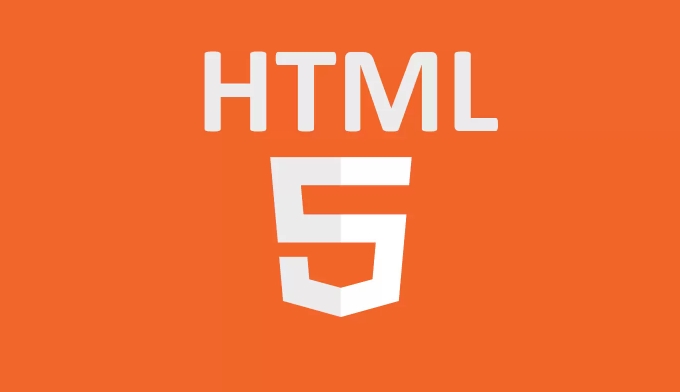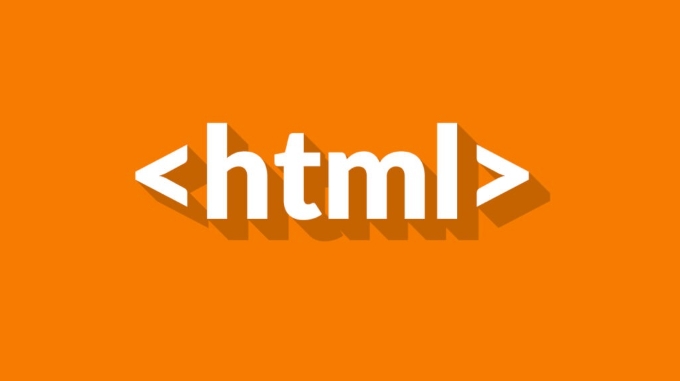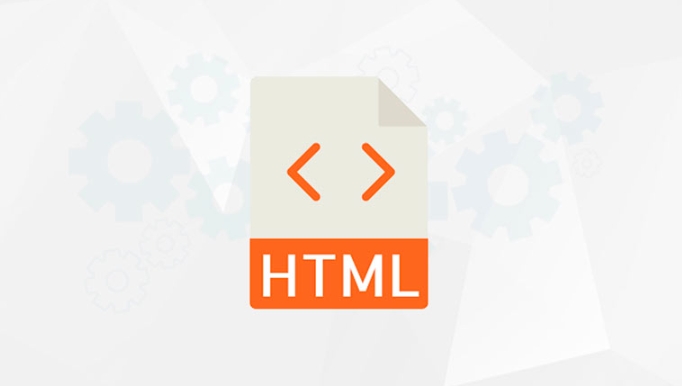HTML5 Geolocation API obtains user geolocation information through a browser. The enable method is to use navigator.geolocation.getCurrentPosition() to get the location, provided that the user authorization is. 1. First check whether the browser supports: if ("geolocation" in navigator); 2. Call the getCurrentPosition() method to obtain latitude and longitude; 3. Handle user permissions and errors. Notes include: it must run in an HTTPS environment, the mobile terminal is more accurate, the permission management of different browsers is different, the timeout mechanism and alternative solutions such as IP positioning are required. In actual development, prompts should be added to improve user experience and strengthen privacy protection.

HTML5 Geolocation API is a function provided by the browser that allows websites to obtain user's geographic location information. The core function of this technology is to allow users to automatically obtain their location when accessing certain services, such as for scenarios such as map location, weather query or recommendations from nearby merchants.

To implement this function, no complicated settings are required. As long as the user authorizes, the website can use JavaScript to call relevant interfaces to obtain latitude and longitude and other information.
How to enable the Geolocation API?
The call to the Geolocation API is very simple, and navigator.geolocation.getCurrentPosition() method is usually used to get the current location. But the premise is that the user must agree to the website's access to its location information.

A common practice is to check whether the browser supports this feature first:
if ("geolocation" in navigator) {
// You can use the Geolocation API
} else {
// The current browser does not support it}If supported, call the method to get the location:

navigator.geolocation.getCurrentPosition(
(position) => {
console.log("latitude:" position.coords.latitude);
console.log("longitude:" position.coords.longitude);
},
(error) => {
console.error("Failed to get location", error);
}
);It should be noted that users need to reauthorize each time they access, or they may permanently deny authorization. Therefore, in actual development, it is recommended to add error handling and prompt logic.
User Privacy and Permission Control
The Geolocation API involves user privacy, so the browser will pop up the permission request box asking the user whether to allow the website to obtain location information.
- If the user clicks "Allow", the website can be accessed once or continuously (depending on the settings).
- If the user selects "Block", the location cannot be obtained unless the browser settings are manually changed.
- Some browsers also support the "One Only" option, which allows only current access and still needs to be confirmed next time.
To improve the user experience, you can add a prompt before calling the API, such as: "We need to get your location to recommend nearby restaurants for you."
Things to note in practical applications
Although the Geolocation API is easy to use, there are some details that are easily overlooked in actual projects:
- More stable in HTTPS environments : Most modern browsers require that pages must run under HTTPS to enable positioning.
- The mobile terminal has higher accuracy : Compared with computers, the coordinates provided by mobile GPS are more accurate.
- Different browser behaviors vary slightly : For example, Firefox and Chrome may have different default behaviors in permission management.
- There may be a delay in getting the location : especially where the signal is weak, the timeout mechanism and loading status prompts need to be considered.
If you want the program to have alternative options when it cannot obtain the location, such as using IP geolocation as a guarantee, it can also be used in conjunction with third-party services.
Basically that's all. The Geolocation API is not complicated, but involves user authorization, browser compatibility and privacy issues. If you are not careful, you may make an error. By mastering the basic processes and common processing methods, you can flexibly use them in the project.
The above is the detailed content of What is HTML5 Geolocation API?. For more information, please follow other related articles on the PHP Chinese website!

Hot AI Tools

Undress AI Tool
Undress images for free

Undresser.AI Undress
AI-powered app for creating realistic nude photos

AI Clothes Remover
Online AI tool for removing clothes from photos.

Clothoff.io
AI clothes remover

Video Face Swap
Swap faces in any video effortlessly with our completely free AI face swap tool!

Hot Article

Hot Tools

Notepad++7.3.1
Easy-to-use and free code editor

SublimeText3 Chinese version
Chinese version, very easy to use

Zend Studio 13.0.1
Powerful PHP integrated development environment

Dreamweaver CS6
Visual web development tools

SublimeText3 Mac version
God-level code editing software (SublimeText3)
 Implementing Clickable Buttons Using the HTML button Element
Jul 07, 2025 am 02:31 AM
Implementing Clickable Buttons Using the HTML button Element
Jul 07, 2025 am 02:31 AM
To use HTML button elements to achieve clickable buttons, you must first master its basic usage and common precautions. 1. Create buttons with tags and define behaviors through type attributes (such as button, submit, reset), which is submitted by default; 2. Add interactive functions through JavaScript, which can be written inline or bind event listeners through ID to improve maintenance; 3. Use CSS to customize styles, including background color, border, rounded corners and hover/active status effects to enhance user experience; 4. Pay attention to common problems: make sure that the disabled attribute is not enabled, JS events are correctly bound, layout occlusion, and use the help of developer tools to troubleshoot exceptions. Master this
 Configuring Document Metadata Within the HTML head Element
Jul 09, 2025 am 02:30 AM
Configuring Document Metadata Within the HTML head Element
Jul 09, 2025 am 02:30 AM
Metadata in HTMLhead is crucial for SEO, social sharing, and browser behavior. 1. Set the page title and description, use and keep it concise and unique; 2. Add OpenGraph and Twitter card information to optimize social sharing effects, pay attention to the image size and use debugging tools to test; 3. Define the character set and viewport settings to ensure multi-language support is adapted to the mobile terminal; 4. Optional tags such as author copyright, robots control and canonical prevent duplicate content should also be configured reasonably.
 Best HTML tutorial for beginners in 2025
Jul 08, 2025 am 12:25 AM
Best HTML tutorial for beginners in 2025
Jul 08, 2025 am 12:25 AM
TolearnHTMLin2025,chooseatutorialthatbalanceshands-onpracticewithmodernstandardsandintegratesCSSandJavaScriptbasics.1.Prioritizehands-onlearningwithstep-by-stepprojectslikebuildingapersonalprofileorbloglayout.2.EnsureitcoversmodernHTMLelementssuchas,
 HTML for email templates tutorial
Jul 10, 2025 pm 02:01 PM
HTML for email templates tutorial
Jul 10, 2025 pm 02:01 PM
How to make HTML mail templates with good compatibility? First, you need to build a structure with tables to avoid using div flex or grid layout; secondly, all styles must be inlined and cannot rely on external CSS; then the picture should be added with alt description and use a public URL, and the buttons should be simulated with a table or td with background color; finally, you must test and adjust the details on multiple clients.
 How to associate captions with images or media using the html figure and figcaption elements?
Jul 07, 2025 am 02:30 AM
How to associate captions with images or media using the html figure and figcaption elements?
Jul 07, 2025 am 02:30 AM
Using HTML sums allows for intuitive and semantic clarity to add caption text to images or media. 1. Used to wrap independent media content, such as pictures, videos or code blocks; 2. It is placed as its explanatory text, and can be located above or below the media; 3. They not only improve the clarity of the page structure, but also enhance accessibility and SEO effect; 4. When using it, you should pay attention to avoid abuse, and apply to content that needs to be emphasized and accompanied by description, rather than ordinary decorative pictures; 5. The alt attribute that cannot be ignored, which is different from figcaption; 6. The figcaption is flexible and can be placed at the top or bottom of the figure as needed. Using these two tags correctly helps to build semantic and easy to understand web content.
 How to handle forms submission in HTML without a server?
Jul 09, 2025 am 01:14 AM
How to handle forms submission in HTML without a server?
Jul 09, 2025 am 01:14 AM
When there is no backend server, HTML form submission can still be processed through front-end technology or third-party services. Specific methods include: 1. Use JavaScript to intercept form submissions to achieve input verification and user feedback, but the data will not be persisted; 2. Use third-party serverless form services such as Formspree to collect data and provide email notification and redirection functions; 3. Use localStorage to store temporary client data, which is suitable for saving user preferences or managing single-page application status, but is not suitable for long-term storage of sensitive information.
 What are the most commonly used global attributes in html?
Jul 10, 2025 am 10:58 AM
What are the most commonly used global attributes in html?
Jul 10, 2025 am 10:58 AM
class, id, style, data-, and title are the most commonly used global attributes in HTML. class is used to specify one or more class names to facilitate style setting and JavaScript operations; id provides unique identifiers for elements, suitable for anchor jumps and JavaScript control; style allows for inline styles to be added, suitable for temporary debugging but not recommended for large-scale use; data-properties are used to store custom data, which is convenient for front-end and back-end interaction; title is used to add mouseover prompts, but its style and behavior are limited by the browser. Reasonable selection of these attributes can improve development efficiency and user experience.
 Implementing Native Lazy Loading for Images in HTML
Jul 12, 2025 am 12:48 AM
Implementing Native Lazy Loading for Images in HTML
Jul 12, 2025 am 12:48 AM
Native lazy loading is a built-in browser function that enables lazy loading of pictures by adding loading="lazy" attribute to the tag. 1. It does not require JavaScript or third-party libraries, and is used directly in HTML; 2. It is suitable for pictures that are not displayed on the first screen below the page, picture gallery scrolling add-ons and large picture resources; 3. It is not suitable for pictures with first screen or display:none; 4. When using it, a suitable placeholder should be set to avoid layout jitter; 5. It should optimize responsive image loading in combination with srcset and sizes attributes; 6. Compatibility issues need to be considered. Some old browsers do not support it. They can be used through feature detection and combined with JavaScript solutions.






